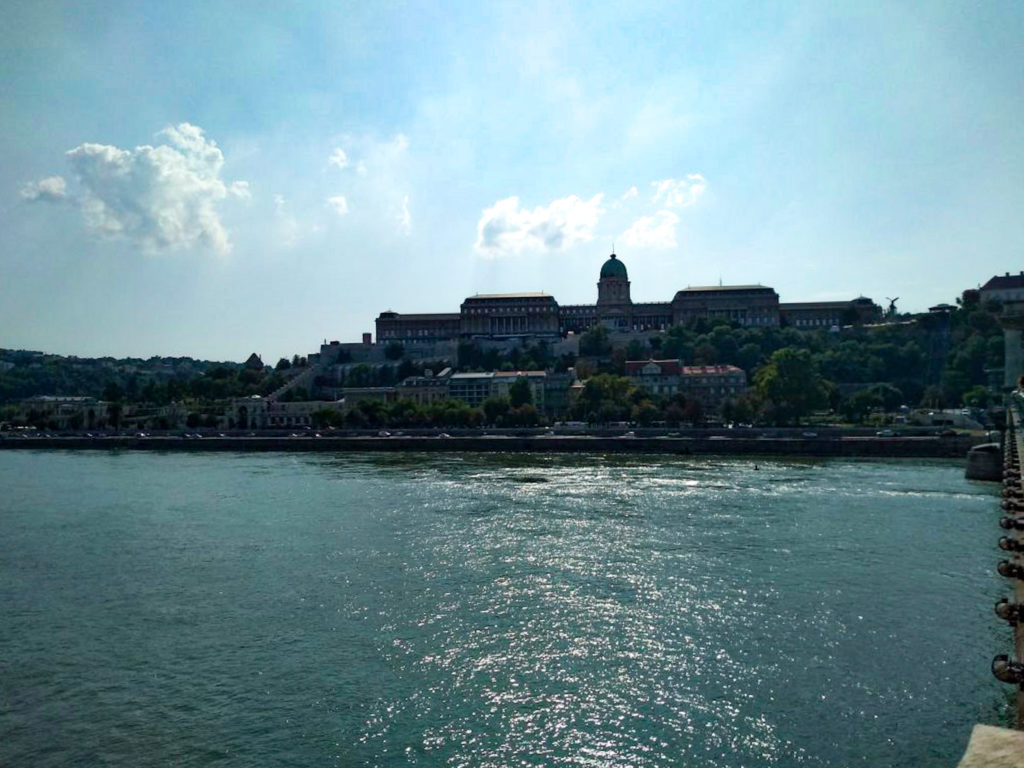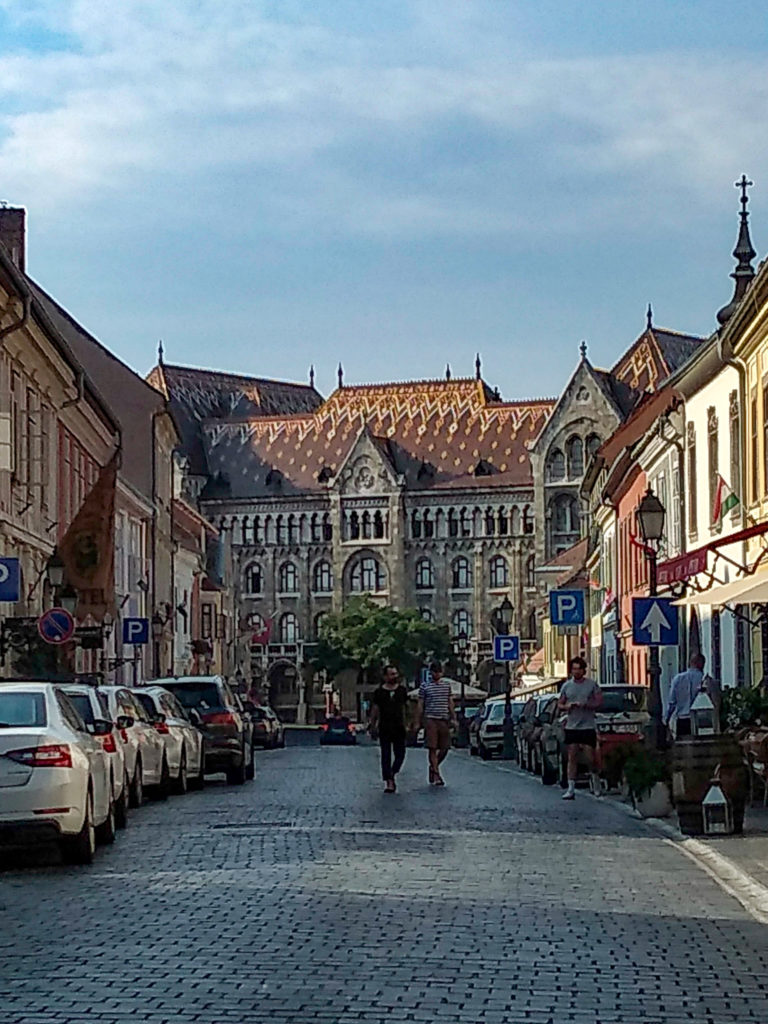“Queen of the Danube”.

Where is Budapest?
Budapest city is located in north central Hungary.
Budapest is the capital city of Hungary and straddles the River Danube. The hilly Buda district is on the western bank, with Buda castle situated on the hilltop. Positioned on the relatively flat eastern bank is Pest.

Due to its architecture and exceedingly scenic setting, Budapest has earned the nickname “Queen of the Danube”. Making it one of Europe’s most delightful and enjoyable cities.
Notable places within the city include the 19th-century Chain Bridge connecting Buda and Pest.
The funicular railway, which runs up Castle Hill to Buda’s Old Town.

The Budapest History Museum, which traces city life from Roman times onward.
Trinity Square, the home to 13th-century Matthias Church.

Fisherman’s Bastion, which offers sweeping views of the majestic, neo-Gothic Hungarian Parliament Building, on the Pest side of the River Danube.
Getting there
We travelled from Vienna to Budapest on the bus, arriving at Budapest Nepliget bus station.
The main sights in Budapest are easily accessible on foot. We had limited time for sight seeing as we were only in Budapest for a day.
We opted to use the public transport to get around the city.
Our day in Budapest
As we were only in Budapest for a day, we stored our backpacks in the luggage storage lockers at Keleti Palyaudvar train station, at 800 HUF for 24 hours.
This was the station from where we were getting our sleeper train to Brasov, Romania later that evening.
Our sightseeing started with us getting the metro from Keleti Palyaudvar metro station.
Taking the M2 line to Deák Ferenc tér metro station for 350 HUF each.
From there it was a short scenic walk through Elizabeth park and gardens, home to the Budapest Eye Ferris Wheel.
Turning left down József Attila Utca towards the river brought us out into Széchenyi square.
Surrounded with amazing architecture, the square is home to the:-
Mosque of Pasha Qasim, City Hall, County Hall, Zsolnay well, Fatebenefratelli Church, Trinity statue and the brass statue of János Hunyadi on horseback.
From Széchenyi square we crossed over Széchenyi Chain Bridge, the first permanent bridge across the Danube in Hungary.
Crossing over the bridge, we arrived at the lower end of the Castle Hill Funicular, which leads up to the beautiful Buda Castle.
Adjacent to the funicular station is the Zero Kilometre Stone, a 3m high limestone sculpture. From this reference point all Hungarian road distances to Budapest are measured.
The funicular runs 6 days a week, being closed on:-
Mondays from: 0730 – 2200 hrs.
Tickets cost 1400 HUF for a single journey and 2000 HUF for a return.
The ride up to the top gives great views over the River Danube and the city.
Places of interest
Buda Castle
At the top of the funicular is the imposing Buda Castle. With its impressive 300m + facade overlooking River Danube below.

The castle is the historical palace complex of the Hungarian kings in Budapest.
The castle is home to a number of cultural institutions, including two museums, the National Gallery and the Budapest History Museum.
The Changing of the Guard ceremony takes place every hour during the day, in front of the presidential Sándor Palace.
The courtyards of the castle are open 24 hours a day, 7 days a week.
Fisherman’s Bastion
A short walk from the castle and we were at The Halászbástya or Fisherman’s Bastion. The name honours the medieval Guild of Fishermen, who historically protected this stretch of the district.


It offers the best stunning panoramic views over the River Danube and Budapest from its Neo-Romanesque lookout terraces and decorative fortifications.

St Stephen’s Basilica and the Parliament House being clearly visible.
The bastion consists of seven towers, each one symbolizing one of the seven Magyar tribes that settled in Hungary.
Matthias Church
In front of the Fisherman’s Bastion, in the Holy Trinity Square, is the Church of the Assumption of the Buda Castle, more commonly referred to as Matthias Church.

Constructed in the florid late Gothic style in the second half of the 14th century. It was extensively restored in the late 19th century and is a stunning piece of architecture.
We had a sleeper train to catch bound for Romania. Unfortunately, our time in Budapest was to short.

We didn’t get the opportunity to go and see St Stephen’s Basilica or Hero’s Square, as well as some other equally beautiful sights that Budapest has to offer.
Getting around
Public transportation around Budapest is good and cheap.
You can get to any sight and attraction easily by travelling on the metro, tram, bus and trolley bus services.
Current ticket prices can be found on The Budapest Public Transportation Center (BKK) website.
A variety of tickets are available, including single journey tickets and travelcards, which are valid for longer periods of time.
A single ticket is valid for one journey and requires validation after purchase and before travel. Simply insert the ticket face up, numbered end first in the orange validation machines provided.
Provided a station is not excited. Transfers between metro trains with the same ticket are permitted.
However, each time you board a new vehicle (bus, tram or trolley bus) or the mode of transport is changed. You will need to purchase and validate a new ticket.
Travel cards are valid for an unlimited number of journeys over a longer period of time and don’t require validation for each journey.
If public transport is used at least five times within 24 hour period. Then a more economical option, would be the day pass.
Located at the bus and tram stops at all metro stations. Tickets can be purchased from the purple machines
Payment can be made with Hungarian Forints or international credit/debit cards. The machine allows the selection of several different operating languages, including English, Spanish, German and French.
The purchase of single tickets from drivers is possible on some buses and trams in the city center. They are cash purchases only and are more expensive than a ticket from the machines.







